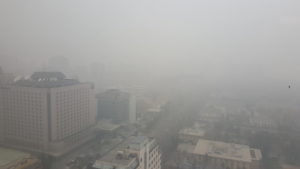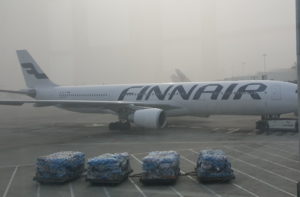V. Faye McNeill, Beijing, China, December 21, 2016

Much of China, including the capital city, Beijing, is experiencing sustained heavy smog this week, with air pollution at hazardous levels for the past three days. Concentrations of fine particulate matter in Beijing’s air today exceeded 400 ug/m3, more than ten times China’s National Ambient Air Quality Standard (35 ug/m3). The episode has caused an increase in hospitalizations and disruptions in air traffic due to poor visibility. The government has declared a “red alert” and taken emergency measures including industrial shutdowns, odd-even traffic restrictions, and school cancellations to protect public health.
“I love Beijing. I grew up here and spent my whole life here. If it weren’t for the air pollution, I would love living here. But now I think about leaving. Many people are leaving.”

Air quality is an ongoing issue in Beijing, and a major subject of concern for its residents. As one Beijing native told me: “I love Beijing. I grew up here and spent my whole life here. If it weren’t for the air pollution, I would love living here. But now I think about leaving. Many people are leaving.” According to the U.S. Embassy, between 2008-2015, the daily average air quality index in Beijing fell in the “Unhealthy,” “Very Unhealthy,” or “Hazardous” categories 67% of the time. A severe air quality episode in January 2013 was somewhat of a turning point, leading to increased pressure on the government to tighten regulations. One outcome was the amendment of the national ambient air quality standards. Meeting the new standards for PM2.5 would be a major step towards protecting public health. But, as episodes like this one show, improvement is slow to come. Plans for local implementation and enforcement of the new air quality standards are still in the development stages. In some cases major changes in infrastructure are needed in order to reduce emissions, and this can take time. Local efforts alone won’t be enough: The city of Beijing has made bold moves towards eliminating coal burning within the city, but much of Beijing’s pollution comes from upwind sources, outside the city limits.
With the will of government and the people aligned, China is poised to turn around its air pollution problem. Unlike the U.S., which greatly improved its air quality in the last century and now must tackle climate, China is in a position to develop smart new policies and technology to improve air quality and reduce carbon emissions simultaneously.
